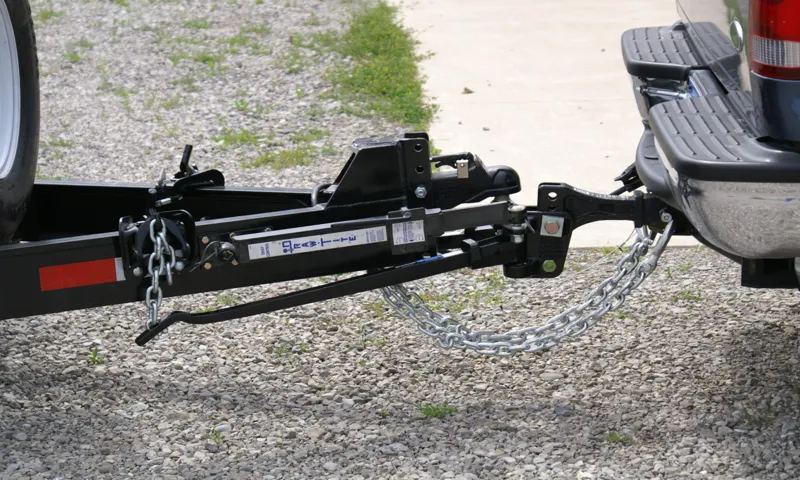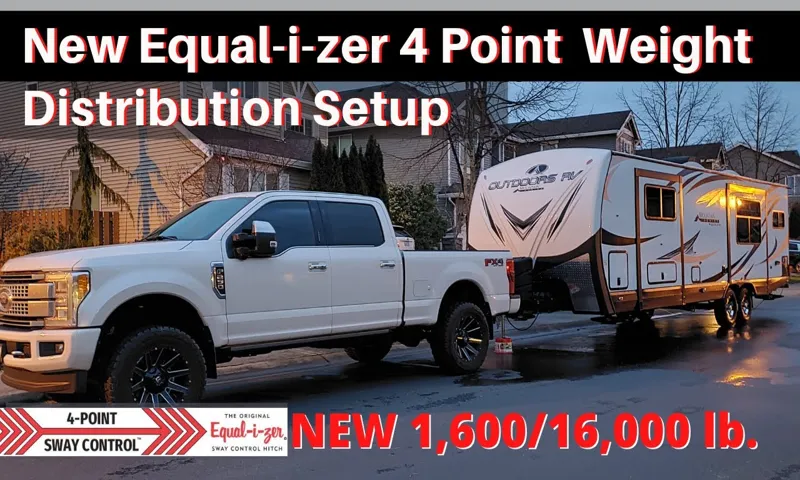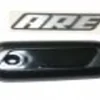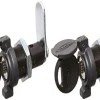Are you planning to tow a trailer with your vehicle? If so, it’s important to understand the significance of properly installing an equalizer hitch. An equalizer hitch is a crucial component in ensuring a safe and smooth towing experience. It helps distribute the weight of the trailer and reduces the strain on your vehicle’s suspension, brakes, and tires.
Imagine trying to balance a heavy load on a seesaw without proper adjustment. The same principle applies to towing a trailer without an equalizer hitch. Without it, your vehicle can become unstable, compromising your safety and the safety of others on the road.
In this blog, we will explore why the proper installation of an equalizer hitch is of utmost importance and how it can enhance your towing experience. So, let’s dive in and discover why this hitch is an essential investment for anyone planning to tow a trailer.
Table of Contents
What is an Equalizer Hitch?
Yes, an equalizer hitch can be installed incorrectly. It is important to install an equalizer hitch properly to ensure that it functions correctly and safely. When installing an equalizer hitch, it is crucial to follow the manufacturer’s instructions and guidelines.
This includes properly adjusting the spring bars, ensuring that the hitch head is level, and tightening all the necessary bolts and nuts. If an equalizer hitch is installed incorrectly, it can lead to a variety of issues such as poor weight distribution, sway, and even damage to the trailer or tow vehicle. It is important to take the time to properly install an equalizer hitch or consult with a professional if needed to ensure that it is done correctly.
Definition and Function
equalizer hitch An equalizer hitch is a device used in towing to distribute the weight of a trailer evenly across the towing vehicle. It is specifically designed to improve stability and control while towing, especially for heavy loads. How does it work? Well, an equalizer hitch is made up of a ball mount, spring bars, and a weight-distributing system.
The ball mount attaches to the towing vehicle, while the spring bars connect to both the ball mount and the trailer. The weight-distributing system helps to transfer some of the trailer’s weight to the front axle of the towing vehicle, creating a more balanced towing experience. This is especially important because when a trailer is not properly balanced, it can put a strain on the towing vehicle, making it harder to control and potentially causing accidents.
So, by using an equalizer hitch, you can ensure a safer and smoother towing experience.

Can an Equalizer Hitch be Installed Incorrectly?
Yes, it is possible for an equalizer hitch to be installed incorrectly. An equalizer hitch is a towing device that helps distribute the weight between the towing vehicle and the trailer, improving stability and control while towing. However, if it is not installed properly, it can actually do more harm than good.
Improper installation can lead to a variety of issues, such as excessive sway, uneven weight distribution, poor handling, and even damage to the hitch or trailer. It is important to carefully follow the manufacturer’s instructions when installing an equalizer hitch and to ensure that all components are properly aligned and tightened. Additionally, it may be helpful to have a professional check the installation to ensure everything is secure and functioning correctly.
By taking the time to properly install and maintain your equalizer hitch, you can maximize its effectiveness and safety while towing.
Possible Installation Mistakes
equalizer hitch, installation mistakes, incorrectly installed equalizer hitch Installing an equalizer hitch seems like a straightforward task, but there are a few mistakes that can easily be made if you’re not careful. One common mistake is installing the hitch incorrectly. This can happen if the brackets are not properly aligned with the trailer frame or if the hitch ball is not tightened securely onto the ball mount.
Another mistake is not properly adjusting the weight distribution bars. These bars are designed to distribute the weight of the trailer evenly across the tow vehicle and trailer, but if they are not adjusted correctly, they can cause problems. If the bars are too loose, they may not provide enough weight distribution, leading to poor handling and increased sway.
On the other hand, if the bars are too tight, they can overly distribute weight to the rear of the vehicle, causing the front wheels to lose traction and affecting steering control. It’s also important to ensure that all bolts and nuts are tightened properly during installation. Loose bolts can lead to excessive movement and noise, and can even cause damage to the hitch or trailer frame.
Lastly, it’s crucial to follow the manufacturer’s instructions when installing an equalizer hitch. Each hitch may have specific requirements and installation steps, so it’s important to read and understand the instructions thoroughly. This will help ensure that the hitch is installed correctly and will function properly when towing.
In conclusion, while installing an equalizer hitch may seem simple, there are several mistakes that can be made if you’re not careful. From incorrectly aligning the brackets to not properly adjusting the weight distribution bars, these mistakes can lead to poor handling, increased sway, and even damage to the hitch or trailer frame. By following the manufacturer’s instructions and taking the time to double-check each step of the installation process, you can avoid these mistakes and ensure a safe and secure towing experience.
Consequences of Incorrect Installation
equalizer hitch, incorrect installation
Signs of Incorrect Installation
Can an equalizer hitch be installed incorrectly? The answer is yes, and there are several signs that can indicate an incorrect installation. One of the most noticeable signs is uneven weight distribution. If the hitch is not set up properly, the weight of the trailer may not be properly spread across all four tires, which can lead to uneven tire wear and instability on the road.
Another sign of incorrect installation is excessive swaying or bouncing of the trailer. If the equalizer hitch is not properly adjusted, it may not be able to effectively control the movement of the trailer, causing it to sway or bounce excessively while in motion. Additionally, if the hitch is installed at the wrong height or angle, it can put strain on the towing vehicle’s suspension system and cause it to handle poorly.
It is important to have an equalizer hitch installed correctly to ensure safe and stable towing.
Uneven Weight Distribution
shifting weight distribution during car installation.
Swaying and Instability
When it comes to installing equipment or furniture, getting it right is crucial to ensure safety and stability. One clear sign of incorrect installation is swaying and instability. Have you ever experienced sitting on a chair or using a piece of equipment that felt wobbly or unsteady? It’s not only uncomfortable but also potentially dangerous.
This can happen if the installation process was not done properly, resulting in loose or unstable connections. Imagine building a house of cards. If the cards are not aligned correctly or if the base is not solid, the whole structure is at risk of toppling over.
The same principle applies to installing equipment or furniture. If the screws or bolts are not tightened securely, the item may sway or wiggle, indicating an incorrect installation. This can pose a risk of tipping over or collapsing, especially if the item is meant to support weight or be used for an extended period.
Another sign of incorrect installation is if the item does not feel stable when in use. For example, if you mount a TV on a wall bracket and it tilts or shakes when you adjust the angle or swivel, it’s a clear indication that something is not right. This could be due to a faulty installation or inadequate support for the weight of the TV.
If you notice any swaying or instability in equipment or furniture after installation, it’s important to take immediate action. Check for any loose connections or missing parts. If you are unsure about how to fix the issue, it’s best to consult a professional or contact the manufacturer for guidance.
Remember, safety should always be a top priority, and ensuring correct installation is key to avoiding accidents or damage.
Excessive Noise
Excessive noise is a common problem that many people face in their homes or workplaces. It can disrupt concentration, hinder productivity, and even lead to sleep disturbances. While there can be various causes of excessive noise, one possible reason is incorrect installation.
When it comes to appliances or equipment that generate noise, such as air conditioners, refrigerators, or even audio systems, a faulty installation can amplify the noise level. This can happen if the appliance is not properly secured or if there are gaps in the insulation. Additionally, loose or improperly fitted parts can create vibrations that result in excessive noise.
These signs of incorrect installation should not be ignored as they can have a significant impact on the overall noise level in the environment. So if you’re experiencing excessive noise, it might be worth checking if the installation was done correctly to address the issue effectively.
How to Properly Install an Equalizer Hitch
Installing an equalizer hitch is a crucial step in properly setting up your trailer for towing. While it may seem like a straightforward process, there is a possibility of installing it incorrectly. This can result in poor weight distribution, reduced stability, and increased sway when towing.
To avoid these issues, it is essential to follow the manufacturer’s instructions carefully and ensure that all components are properly aligned and tightened. It is also important to check the weight ratings of the hitch and your trailer to ensure that they are compatible. Overall, taking the time to install an equalizer hitch correctly will greatly enhance your towing experience by providing a safe and stable ride.
Follow Manufacturer’s Instructions
equalizer hitch installation, follow manufacturer’s instructions, proper installation, equalizer hitch When it comes to installing an equalizer hitch, it’s crucial to follow the manufacturer’s instructions. This ensures that you install the hitch properly and in the safest way possible. The manufacturer’s instructions will provide you with step-by-step guidance, outlining the necessary tools, measurements, and techniques needed for a successful installation.
By following these instructions, you can avoid any potential issues or mistakes that may arise during the installation process. Additionally, the manufacturer’s instructions will also provide you with information on the weight distribution and sway control features of the hitch, helping you to understand how to properly adjust and utilize these aspects for a smoother towing experience. So, before diving into the installation process, take the time to thoroughly read and understand the manufacturer’s instructions.
It will save you time, frustration, and most importantly, help ensure the safety of you and your vehicle.
Correctly Adjusting the Hitch
equalizer hitch, adjust the hitch, proper installation Installing an equalizer hitch is an important step in ensuring the safety and stability of your towing setup. When it comes to adjusting the hitch, there are a few key things to keep in mind. Firstly, you’ll want to ensure that the hitch is properly aligned with your tow vehicle.
This means that the ball mount should be installed at the correct height and angle to ensure a level towing position. Additionally, it’s important to adjust the weight distribution bars correctly. These bars help distribute the weight of the trailer evenly across the axles of both the tow vehicle and the trailer, reducing sway and improving stability.
When adjusting the weight distribution bars, you’ll want to make sure that they are set at the correct tension. Too little tension can result in inadequate weight distribution, while too much tension can cause unnecessary strain on your towing setup. It’s also crucial to check the tightness of all the bolts and hardware on the hitch to ensure that everything is securely fastened.
By following these steps and taking the time to properly adjust your equalizer hitch, you can enjoy a safer, more stable towing experience.
Properly Securing the Hitch
install an equalizer hitch, securing the hitch, properly secure the hitch Properly securing the hitch of your trailer is of utmost importance for a safe and smooth towing experience. One of the best ways to ensure a secure hitch is by installing an equalizer hitch. An equalizer hitch is a type of weight distribution hitch that helps evenly distribute the weight of your trailer across all four tires of your towing vehicle.
This not only prevents rear sagging but also improves steering and braking control. To install an equalizer hitch properly, start by attaching the receiver portion to the tongue of your trailer. Make sure it is securely bolted in place and that the safety chains are properly attached.
Next, attach the spring bars to the hitch head, making sure they are evenly spaced. Then, using the appropriate tool, tighten the spring bars to the desired tension. Finally, attach the sway control device to the hitch to prevent any side-to-side movement.
By securely installing an equalizer hitch, you’ll have peace of mind knowing that your trailer is properly balanced and safe for the road. So the next time you’re preparing for a towing adventure, take the time to properly secure your hitch with an equalizer hitch for a safer and more enjoyable journey.
Conclusion
Well of course they can! Just like anything else in life, if there’s a way to mess something up, someone’s bound to find it. It’s like trying to put a puzzle together without reading the instructions – sure, you can force the pieces together, but it won’t be pretty and chances are it won’t work right. Installing an equalizer hitch incorrectly is like a bad dance move – it might look alright at first glance, but the moment you try to bust a move, you’re probably going to trip over your own two feet.
And let me tell you, that’s not a good look on anyone. So trust me when I say, if you’re going to install an equalizer hitch, do it right. Take your time, read the instructions (I promise they’re not as boring as you think), and double-check your work.
Because the last thing you want is to be driving down the road, feeling like you’re in the middle of a rodeo, with your trailer swinging wildly behind you. Remember, an equalizer hitch is supposed to make towing safer and more enjoyable, not turn you into the star of a comedy show. So do yourself a favor, save the funny stuff for the comedy clubs and leave the Hitch Fails to the amateurs.
Your trailer (and your pride) will thank you.”
Importance of Professional Installation
professional installation, install an equalizer hitch, importance of professional installation. In order to ensure a safe and smooth towing experience, it is crucial to properly install an equalizer hitch. While it may be tempting to try and tackle the installation yourself, the importance of professional installation cannot be overstated.
Professionals have the knowledge, experience, and tools necessary to properly set up and adjust the hitch for your specific vehicle and trailer combination. They understand the intricacies of weight distribution and can make the necessary adjustments to ensure a level ride and proper weight distribution between your tow vehicle and trailer. By investing in professional installation, you can have peace of mind knowing that your hitch is properly installed and your towing experience will be safer and more enjoyable.
So don’t take any chances – leave the installation to the professionals.
Ensuring Safe Towing Experience
equalizer hitch, safe towing, installation, tow vehicle, trailer
FAQs
Can an equalizer hitch be installed incorrectly?
Yes, an equalizer hitch can be installed incorrectly if it is not aligned properly or if the weight distribution is not balanced correctly. It is important to carefully follow the manufacturer’s instructions when installing an equalizer hitch to ensure proper installation and safe towing.
What are the signs of an incorrectly installed equalizer hitch?
Signs of an incorrectly installed equalizer hitch can include uneven weight distribution, excessive sway or bouncing while towing, and uneven tire wear. It is important to regularly inspect and adjust the equalizer hitch as needed to ensure it is installed correctly and functioning properly.
Can an incorrectly installed equalizer hitch affect towing performance?
Yes, an incorrectly installed equalizer hitch can greatly affect towing performance. It can lead to poor weight distribution, increased sway, reduced stability, and decreased control while towing. It is crucial to ensure the equalizer hitch is installed correctly to maintain safe and efficient towing performance.
How can I prevent an incorrect installation of an equalizer hitch?
To prevent an incorrect installation of an equalizer hitch, it is recommended to carefully read and follow the manufacturer’s instructions. It may also be helpful to seek guidance from a professional or experienced individual who is knowledgeable in towing and trailer hitch installation. Regular inspections and adjustments can also help ensure the hitch is installed correctly and functioning properly.
Can an equalizer hitch be installed by a non-professional?
Yes, an equalizer hitch can be installed by a non-professional, but it is important to carefully follow the manufacturer’s instructions and guidelines. If unsure about the installation process, it may be advisable to seek assistance from a professional or experienced individual to ensure proper installation and safe towing.
Are there any specific tools required for installing an equalizer hitch?
The specific tools required for installing an equalizer hitch may vary depending on the brand and model. However, typical tools that may be needed include wrenches, socket sets, torque wrenches, and possibly a pry bar or hitch jack. It is important to review the manufacturer’s instructions to determine the exact tools needed for the specific hitch being installed.
Can an incorrectly installed equalizer hitch damage the towing vehicle or the trailer?
Yes, an incorrectly installed equalizer hitch can potentially cause damage to both the towing vehicle and the trailer. Improper weight distribution and unbalanced pressure on the hitch can lead to increased stress on the towing vehicle’s frame and suspension, as well as on the trailer’s tongue and axles. This could result in structural damage or premature wear and tear. It is crucial to ensure the equalizer hitch is correctly installed to prevent any potential damage.
How often should I check the installation of my equalizer hitch? A8. It is recommended to regularly check the installation and functionality of your equalizer hitch. This can be done before each trip or at least every few months. Pay attention to any signs of uneven weight distribution, excessive sway, or changes in towing performance. Regular inspections can help identify any issues early on and allow for timely adjustments or repairs.
Can an incorrectly installed equalizer hitch affect braking performance?
Yes, an incorrectly installed equalizer hitch can potentially affect braking performance. If the weight distribution is not balanced properly, it can cause the rear tires of the towing vehicle to lose traction, leading to reduced braking effectiveness. It is important to ensure the equalizer hitch is installed correctly to maintain safe and efficient braking performance while towing.
Can I install an equalizer hitch on any type of trailer?
Equalizer hitches are designed to be compatible with various types of trailers, including travel trailers, utility trailers, and horse trailers, among others. However, it is crucial to check the manufacturer’s guidelines and specifications to ensure proper compatibility and installation for your specific trailer type. Different trailers may require specific hitch models or additional accessories for optimal performance and safety.



